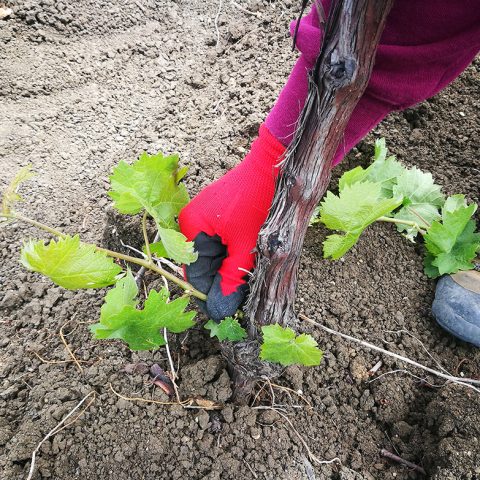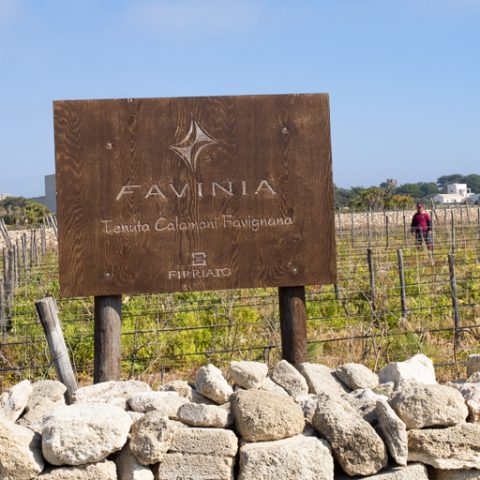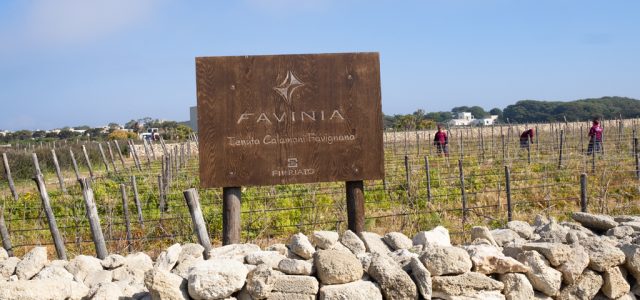Firriato Grape Harvest 2018
The hot heart of the volcano, the north-west sun and the wind of the Egadi islands: this is how the yearly grape harvest was carried out in the terroir of Firriato
The grape harvest at Cavanera Etnea

Good thing end. We refer to the grape harvest, the peak of a year of work in the vineyard. In the Firriato winery, these last days have been dedicated to the grape collection in the Cavanera Etnea estate, on the northeast side of the volcano. A long summer but without thermal excesses even over the harvesting period, heavy rains and mild temperatures around the Etna as in the rest of the island have determined optimal conditions for the vegetative growth of the plants, with perfect development of the foliage which allowed an increase in the level of sugars and acids. These evidences attribute to the vintage characteristics of excellent balance between the olfactory component (aromas) and gustative (alcohol / freshness ratio). All these characteristics will give wines of great finesse and great balance of taste. The increase in grape production, compared to the previous year, characterized by greater drought, will contribute positively to the characteristics of the white wines that will emerge from this harvest with freshness and strong acidity due to the Carricante and its hints of white flowers in the field and its typical note of “flint”. Even for red wines the expectations are high both for the brightest color and for a great balance that is characterized by spicy notes given by the lower temperatures, compared to the seasonal average, which have preserved an aromatic set of great finesse. A vintage that is so positive, almost “ideal” is further reflected in the harvest of Nerello Mascalese, which gives life to the Gaudensius sparkling wine. The tastings of wine made before sparkling wine presage great expectations for this classic Etna method.
The harvest in the Favignana island
Harvest after harvest, the Calamoni vineyard on the island of Favignana tells us, once again, a unique story in the Sicilian winescape. The uniqueness of this vineyard in the archipelago of the Egadi is linked to the climatic trend. 2018 was almost in contrast with the other production areas, for this vintage we can even talk about dryness making a comparison with Etna or with the Trapani countryside. Temperatures recorded were lower than the seasonal average as well as the influence of the wind, which this year was characterized by a direction coming from the north quadrants, which reduced the typical marine aerosol with its briny component and the inflow of posidonia which are peculiar characteristics of this vineyard a few meters from the sea. And it was the proximity to the sea that prevented temperature peaks from characterizing the year from an interesting homogeneity from the veraison to the complete maturation of the grapes. In fact, these were in perfect phytosanitary conditions and the production performances were overall stable compared to the normal capacity of the vines. Slight production increases occurred for the Catarratto and Inzolia varieties. Having finished the fermentation of the white grapes, made the first taste, we can already presage that the Favinia La Muciara of this vintage 2018 will be fresh and aromatic with an intense iodized and Mediterranean maquis that make it unmistakable in the Sicilian wine scene .

The harvest among the hills of the Trapani countryside

Talking about the grape harvest in the Trapani countryside is increasingly complex, because we are actually talking about four of Firriato’s estates – Pianoro Cuddía, Dágala Borromeo, Borgo Guarini and Baglio Soría – representing profoundly different pedoclimatic and production contexts. Here the vintage 2018, which had not started in the best way because of frequent and constant rains, was however reassured in the final step of grape inversion, generating a fresh vintage with high temperature variations between day and night . These favorable conditions, together with the constant monitoring of the phytosanitary aspect and the ripening of the grapes, have determined a decidedly positive picture both for white and red berry grapes which are characterized by a low oxidative metabolism which has induced very low production of phenolic compounds in white grapes while, on the opposite side, for those with black berries it has inhibited the degradation processes of the aromatic, polyphenolic and tannic components, favoring their accumulation.
Here too we expect fresher whites, acids and with an excellent olfactory and aromatic balance. The first tastings of Inzolia and Zibibbo at the end of fermentation draw some really interesting wines that the aging in steel before and in the bottle then can only improve and amalgamate.
The profile is also excellent for the Perricone, both for the “clone” Firriato of Pianoro Cuddía and for that one coming from Baglio Soría which are characterized by a polyphenolic concentration that will give the wine some interesting hints of red fruit, combined with a structured but elegant tannic texture .



























